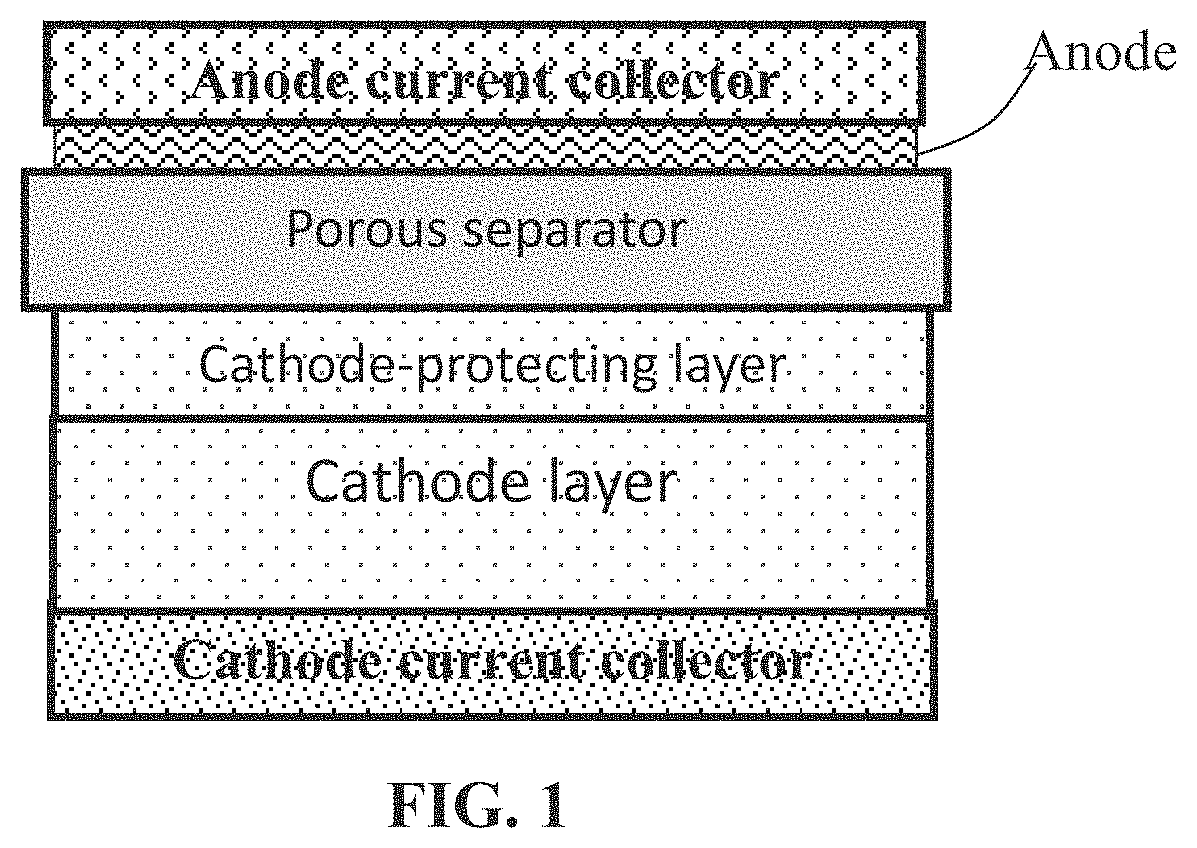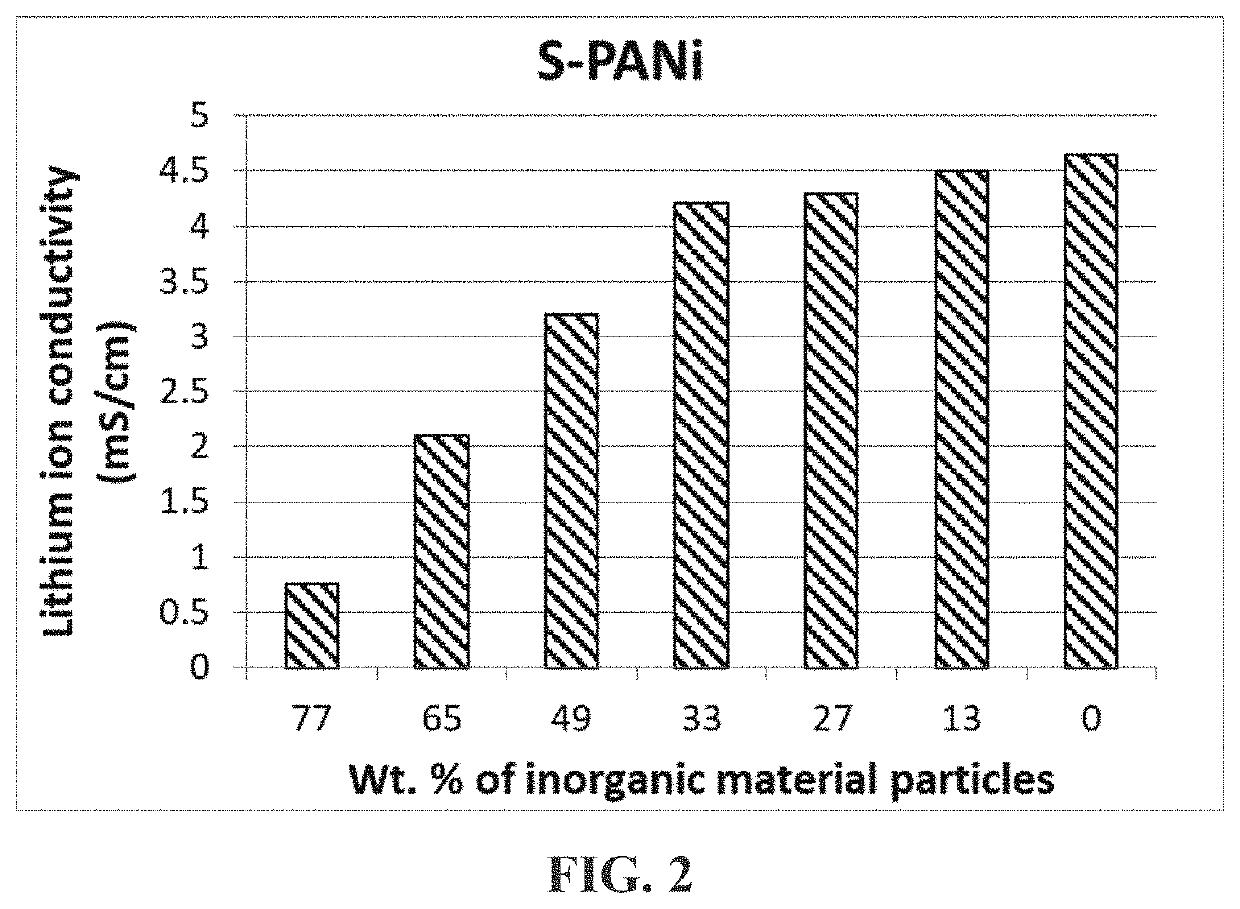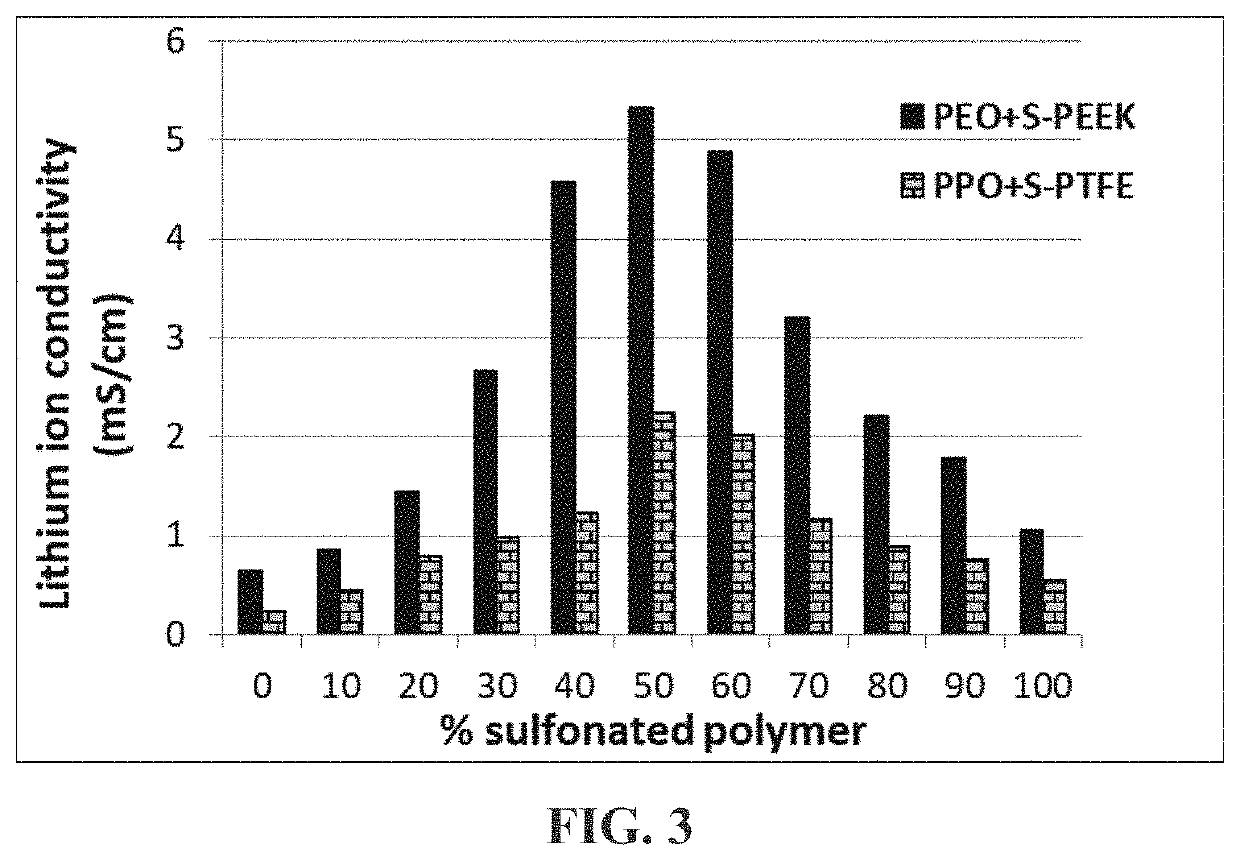Fire-resistant lithium battery containing an electrode-protecting layer
a lithium battery and protection layer technology, applied in the field of cathode protection layer and/or anode protection layer, can solve the problems of battery fire and explosion, non-flammable electrolyte alone may not be able to stop, etc., and achieve the effect of preventing potential li metal dendrite internal short circuit and thermal runaway problems, simple and cost-effective, and high specific energy
- Summary
- Abstract
- Description
- Claims
- Application Information
AI Technical Summary
Benefits of technology
Problems solved by technology
Method used
Image
Examples
example 1
of Sulfonated Polyaniline (S-PANi)
[0110]The chemical synthesis of the S-PANi polymers was accomplished by reacting polyaniline with concentrated sulfuric acid. The procedure was similar to that used by Epstein, et al. (U.S. Pat. No. 5,109,070, Apr. 28, 1992). The resulting S-PANi can be represented by the following Formula 1, with R1, R2, R3, and R4 group being H, 503 or SO3H (R5═H) with the content of the latter two being varied between 30% and 75% (i.e., the degree of sulfonation varied between 30% and 75%).
[0111]The lithium ion conductivity of these 503− or SO3H-based S-PANi compositions was in the range of 8.5×10−5 S / cm to 4.6×10−3 S / cm and their electron conductivity in the range of 0.1 S / cm to 0.5 S / cm when the degree of sulfonation was from approximately 30% to 75% (with y being approximately 0.4-0.6).
[0112]The electrode-protecting layer materials were obtained by dissolving S-PANi in water or acetonitrile to form a polymer-water or polymer-solvent solution and dispersing com...
example 2
on of Electrically Non-Conducting Polymers
[0115]Polytetrafluoroethylene (PTFE), polysulfone (PSf), poly (ether ether ketone) (PEEK), polyimide (PI), and styrene-butadiene copolymers (SB) were separately immersed in a concentrated sulfuric acid (95%+5% water) at 65° C.−90° C. for 4-48 hours to obtain sulfonated polymers. These sulfonated polymers were found to be electrically insulating (−8 S / cm), but lithium ion-conducting (typically 3×10−5 S / cm-4.5×10−3 S / cm, depending on the degree of sulfonation).
[0116]These highly sulfonated polymers were mixed with several types of inorganic material particles (metal oxide, metal carbide, and metal sulfide, as examples of inorganic material particles) to form electrode-protecting layers. When used as a cathode-protecting layer and / or anode-protecting layer, these layers were effective in preventing massive internal shorting when a lithium battery was penetrated by a needle.
[0117]Table 1 below demonstrates that the presently invented electrode-p...
example 3
on of Electrode-Protecting Layers Containing Inorganic Particles in a (Non-Sulfonated) Lithium Ion-Conducting Polymer Via Solution or Melt Mixing
[0118]Another group of presently invented electrode-protecting layers typically comprises (a) a conventional lithium ion-conducting electrolyte polymer (e.g. PEO, PPO, etc.) or its mixtures with a sulfonated polymer and (b) inorganic material particles. As indicated in Table 2 below, these compositions also demonstrate outstanding lithium ion conductivity values. Furthermore, As shown in FIG. 3, the lithium ion conductivity values of a polymer mixture containing a conventional solid electrolyte polymer (PEO or PPO) and a sulfonated polymer exhibit unexpected synergistic effect.
[0119]Not to be bound by the theory, but the presence of a different polymer and some lithium-containing inorganic species appear to be capable of forming more amorphous phase in an otherwise crystalline polymer and enabling faster or easier transport of lithium ions ...
PUM
 Login to View More
Login to View More Abstract
Description
Claims
Application Information
 Login to View More
Login to View More - R&D
- Intellectual Property
- Life Sciences
- Materials
- Tech Scout
- Unparalleled Data Quality
- Higher Quality Content
- 60% Fewer Hallucinations
Browse by: Latest US Patents, China's latest patents, Technical Efficacy Thesaurus, Application Domain, Technology Topic, Popular Technical Reports.
© 2025 PatSnap. All rights reserved.Legal|Privacy policy|Modern Slavery Act Transparency Statement|Sitemap|About US| Contact US: help@patsnap.com



